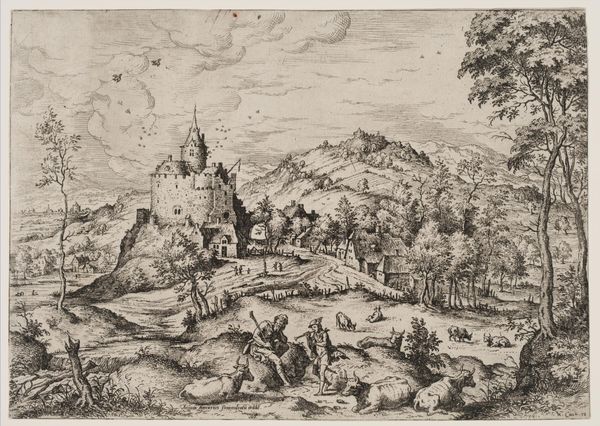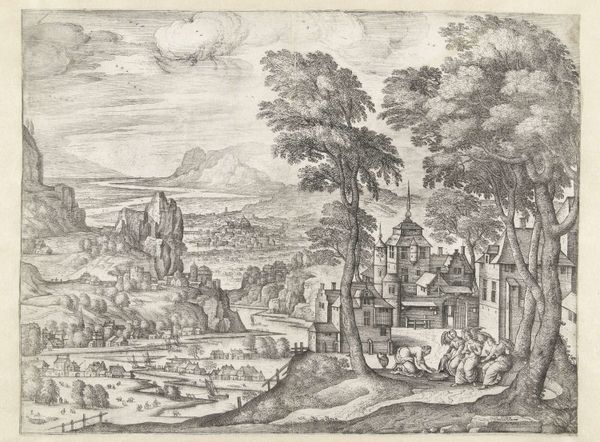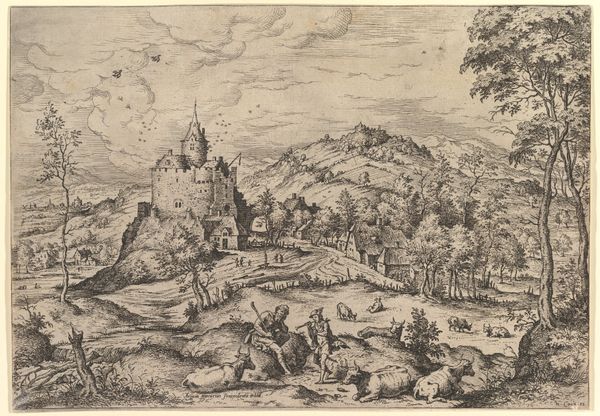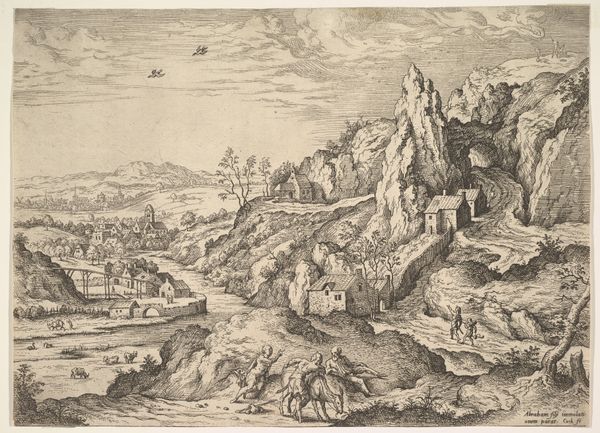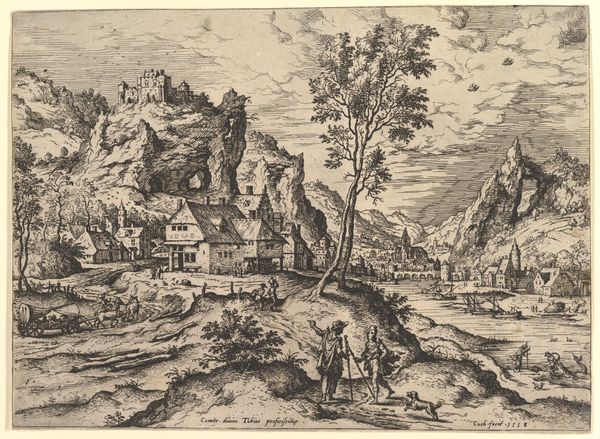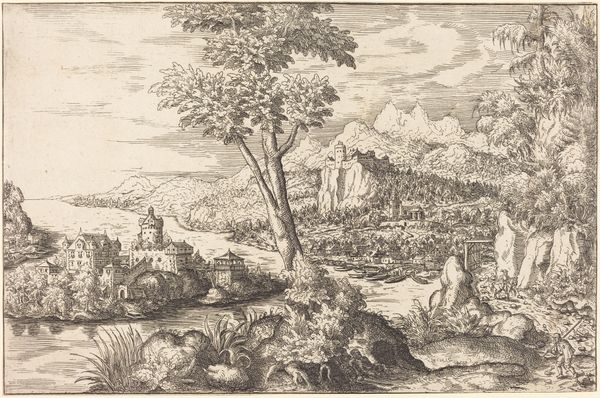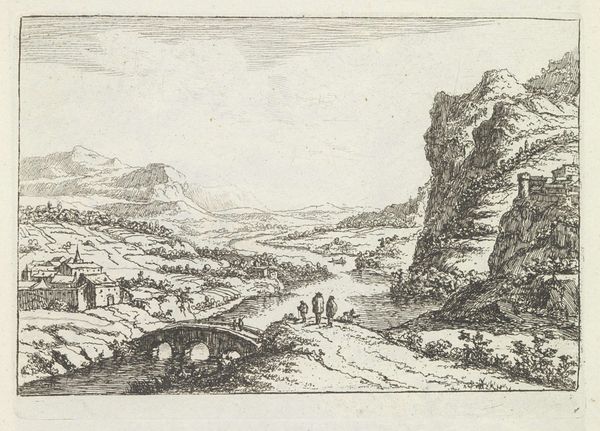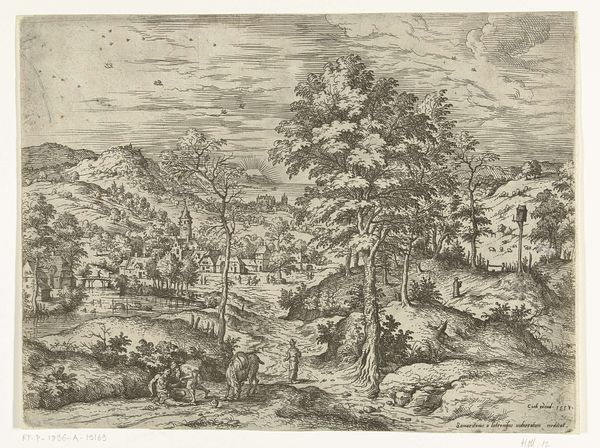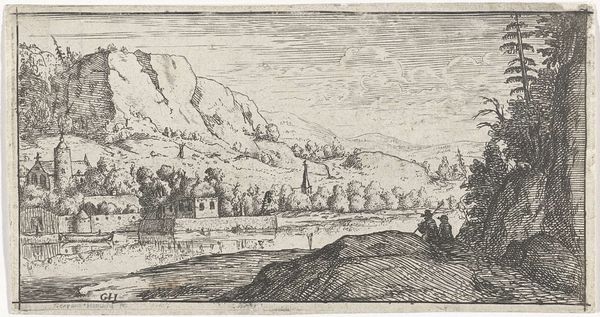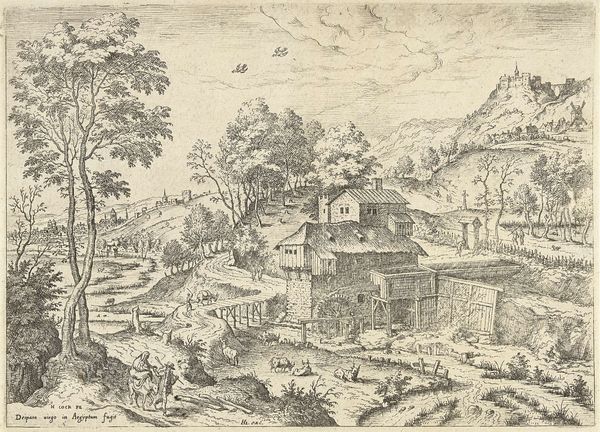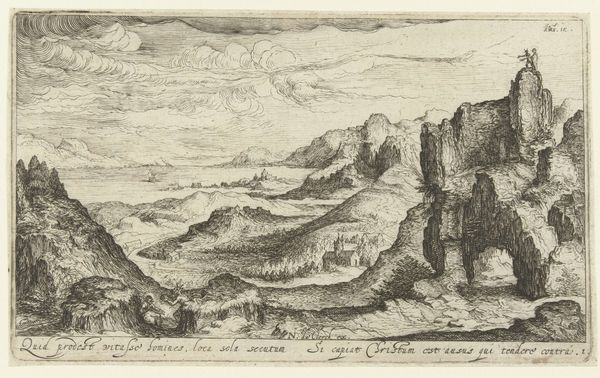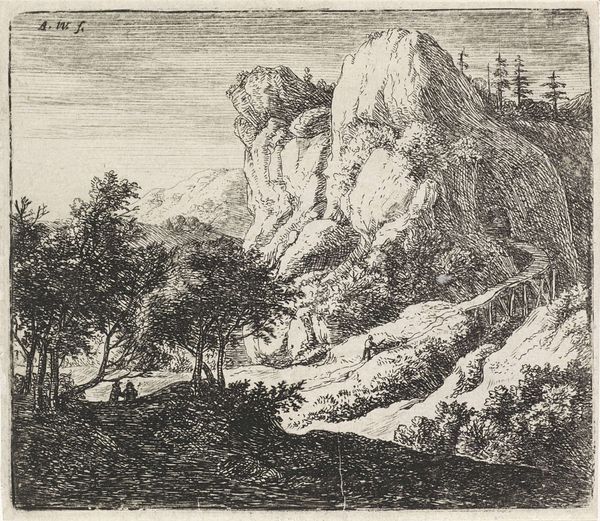
drawing, etching, paper, ink
#
drawing
#
narrative-art
#
pen drawing
#
etching
#
landscape
#
mannerism
#
figuration
#
paper
#
ink
#
history-painting
Dimensions: height 225 mm, width 305 mm
Copyright: Rijks Museum: Open Domain
Curator: This etching before us, crafted by Hieronymus Cock before 1558, is entitled *Daphne verandert in een laurierboom*, currently held in the Rijksmuseum. Editor: The first thing that strikes me is the sheer amount of detail he's packed in. The textures in the rocks, the foliage—it's incredibly busy but also captivating. Curator: Indeed. The composition uses linear perspective to guide the viewer’s eye from the foreground figures of Daphne and Apollo towards the distant landscape, structured by carefully orchestrated lines, values and textures, reflecting Mannerist stylistic elements. Notice the contorted postures of the figures, which create dynamism in an otherwise still setting. Editor: And what about the production of this etching itself? The process involves meticulously etching lines into a metal plate, inking it, and pressing it onto paper. Think of the labour involved, the precision needed for this detailed figuration and landscape elements. Also, that paper had to be sourced, processed. How accessible would images like these have been, who was the target for this kind of work, and who profited most? Curator: Excellent questions. But returning to the image's form, observe how Cock uses light and shadow to enhance depth and volume, further emphasizing the drama of the narrative. The overall effect is almost theatrical. It reflects a conscious attempt to evoke emotion, drawing on mythological themes. Editor: I’d wager this particular mythology offered more than just escapism. Its theme of metamorphosis and its reliance on landscape could be metaphors for transformation within social and political landscapes of that time. Moreover, think about the social status implicated in commissioning such finely-wrought mythological scenes during a period of dramatic change across Europe. It represents, quite literally, the ‘making’ of social hierarchies. Curator: I concede your point about the embedded social dimension of this image. However, consider again the pure artistry with which Cock translated a classical tale into a visual experience. This work reflects the prevailing aesthetics and intellectual pursuits of its time, offering us a lens through which to perceive that era. Editor: Ultimately, this is a detailed scene reflecting broader systems. Whether one looks at mythology or the modes of production for clues, both will take us further than an appreciation of technical dexterity, though it undeniably exists here. Curator: I'd say this layered reading truly illustrates this print’s richness. Editor: Agreed. It offers multiple avenues to meaning-making, depending on one’s point of view.
Comments
No comments
Be the first to comment and join the conversation on the ultimate creative platform.
